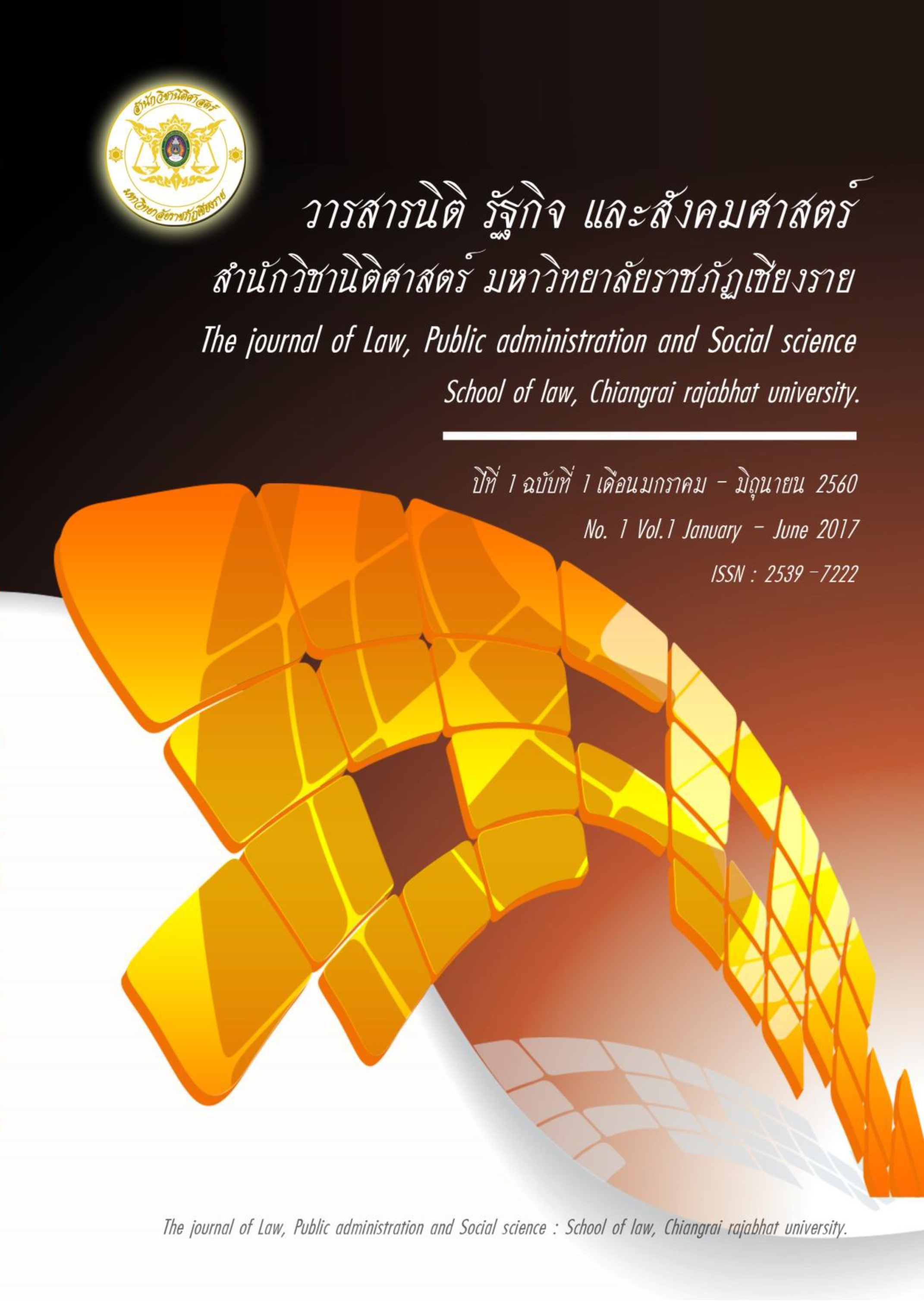Restorative Justice for Law on Procedure of the Juveniles
Main Article Content
Abstract
The criminal procedure of Thailand in the past had been extremely monopolized by the State with no muchparticipation of community and society. Also, that the procedure emphasized on bringing the offender to punish instead of the focusing on the victim or victim of crime, and there was no process to encourage problem solving in the community can increase the court’s tasks as well as child offenders are numerous over tothe reformatory’s carrying capacity. Then the children may not be properly rehabilitated due to limited resources, and cannot be a good person in a creative society.Thus the concept of “Restorative Justice Facilitation” should be applied. Currently, Juvenile and Family Court and Juvenile and Family Case Procedure (No. 1) Act B.E. 2553 [2010] supports the Restorative Justice implementation in the justice process including pre-trial, during trial and post-trial process including Special measures in lieu of criminal proceedings before prosecution, Special measures in lieu of criminal proceedings during trial, and Measures for correction, treatment and rehabilitation before judgment. Moreover the Restorative Justice is designed to coincide with the mainstream justice process, and all processes of preparing rehabilitation plans are compiled with cooperation from all parties.
Article Details
References
ณัฐวสา ฉัตรไพบูลย์, กระบวนการยุติธรรมเชิงสมานฉันท์ : จากทฤษฎีสู่ทางปฏิบัติในนานาชาติ, เอกสารจัดทำขึ้นเนื่องในโอกาสวาระครบรอบ 30 ปี ของคณะนิติศาสตร์ มหาวิทยาลัยเอดินบะระ สหราชอาณาจักร, 2550, น.28-29.
กิตติพงษ์ กิตยารักษ์. (2545). “ความยุติธรรมเชิงสมานฉันท์ : ทางเลือกใหม่สำหรับกระบวนการยุติธรรมไทย”. การบรรยายในการสัมมนาวิชาการ.
ดิเรก ควรสมาคม.สมานฉันท์ : ทบทวน “ความหมาย หลักการ ขั้นตอน ทางพุทธศาสนากับการระงับข้อพิพาทในกฎหมาย”. วารสารนิติศาสตร์ มหาวิทยาลัยนเรศวร, ปีที่ 4 ฉบับที่ 1, 2554.
พระพรหมคุณาภรณ์ (ป.อ.ปยุตโต).วิกฤตบ้านเมืองวันนี้ โอกาสที่มีควรเป็นของใคร : เรื่องที่ 22 ตอบคำถามเรื่อง สมานฉันท์ (mp.3.).วัดญาณเวศสกวัน, นครปฐม, 2551.
สุวิช ปนุตติกร, กระบวนการยุติธรรมเชิงสมานฉันท์กับการดำเนินคดีอาญาของศาล,เอกสารประกอบการอบรม หลักสูตร “ผู้พิพากษาผู้บริหารในศาลชั้นต้น” รุ่นที่ 10 สำนักงานศาลยุติธรรม, 2555, 1 – 2.
เอกสารประกอบการสัมมนา.“แนวคิดและความเป็นมาของพระราชบัญญัติศาลเยาวชนและครอบครัวและวิธีพิจารณาคดีเยาวชนและครอบครัว พ.ศ. 2553”.สำนักกฎหมายและวิชาการศาลยุติธรรม สำนักงานศาลยุติธรรม,128.


